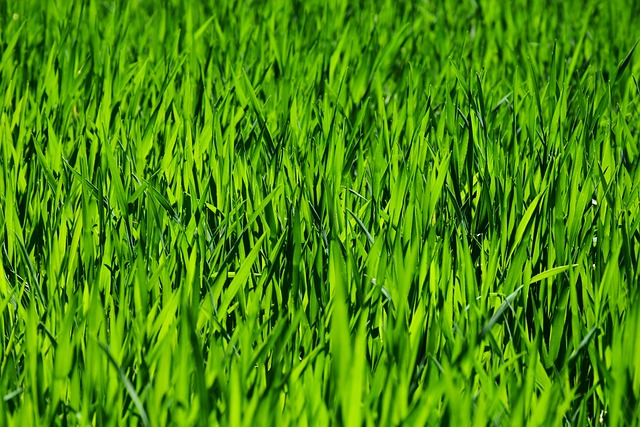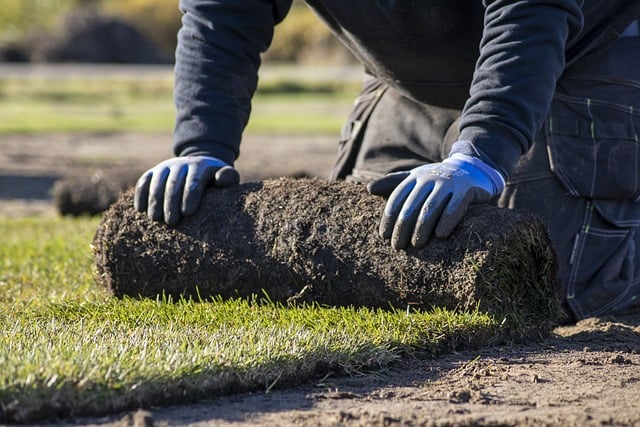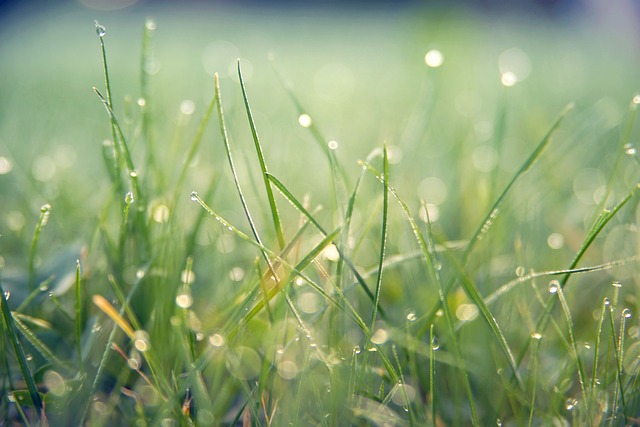Irrigation systems for lawn care and landscaping require understanding your grass's water needs, influenced by grass type, climate, and soil conditions. Professional assessment ensures efficient watering that promotes grass growth while conserving water, a key practice in sustainable lawn care and landscaping. Choose drip irrigation for dense areas, sprinkler systems for open spaces with shorter grass, or misting systems for delicate plants to optimize lawn care and enhance landscape aesthetics. Meticulous planning, including detailed layout diagrams and regular maintenance, is crucial for efficient water distribution and optimal system performance.
“Transform your lawn from a mere green patch to a thriving oasis with an efficient irrigation system. Effective lawn care and landscaping rely on understanding your turf’s water requirements, selecting the ideal system (drip, sprinkler, or misting), and mastering the installation process. This comprehensive guide navigates the journey from planning to maintenance, ensuring optimal results for both your lawn and landscape. Discover how to cultivate a vibrant outdoor space with efficient irrigation.”
- Understanding Your Lawn's Water Needs: A Basis for Effective Irrigation System Installation
- Choosing the Right Irrigation System: Drip, Sprinkler, or Misting – Which is Best for Your Landscape?
- Installation Process and Tips: From Planning to Maintenance for Optimal Lawn Care and Landscaping
Understanding Your Lawn's Water Needs: A Basis for Effective Irrigation System Installation

Irrigation system installation is a significant investment for any lawn care and landscaping enthusiast. Before diving into this process, understanding your lawn’s water needs is crucial. Every lawn is unique, with varying requirements based on factors such as grass type, climate, and soil conditions. For instance, some grasses thrive in moist conditions, while others are more drought-resistant. Similarly, the local climate plays a significant role; regions with frequent rainfall may need less irrigation, whereas drier areas demand more tailored water management solutions.
Landscapers and lawn care professionals can provide valuable insights by assessing your lawn’s health and identifying areas prone to overwatering or underwatering. This initial step ensures that the installed irrigation system is both efficient and effective, promoting lush grass growth while conserving water resources, which is essential in today’s world where sustainable practices are becoming the norm in lawn care and landscaping.
Choosing the Right Irrigation System: Drip, Sprinkler, or Misting – Which is Best for Your Landscape?

When considering irrigation system installation, one of the most important decisions is selecting the right type for your landscape. The choice between drip, sprinkler, or misting systems depends on various factors such as climate, soil type, and plant varieties. For lawn care and landscaping, drip irrigation is highly efficient as it delivers water directly to the plant roots, conserving both water and energy. This method is ideal for large areas with dense vegetation.
On the other hand, sprinkler systems are a popular choice for areas with open spaces and shorter grass. They provide a thorough soaking of the soil surface, making them suitable for various lawn and landscaping needs. Misting systems, while less common, offer a fine spray that can be beneficial for delicate plants or areas where water evaporation is a concern. Understanding your landscape’s unique requirements will help determine which system provides the best lawn care and enhances overall landscaping aesthetics.
Installation Process and Tips: From Planning to Maintenance for Optimal Lawn Care and Landscaping

The installation process of an irrigation system is a meticulous task that requires careful planning to ensure optimal lawn care and landscaping. It begins with assessing your lawn’s needs, considering factors like soil type, climate, and desired vegetation growth. This initial step is crucial for selecting the right equipment and designing a system tailored to your specific requirements. Professionals in lawn care and landscaping often recommend creating a detailed plan, including layout diagrams, before installation to guarantee efficient water distribution.
Regular maintenance is equally vital for keeping the irrigation system functioning at its best. This includes periodic inspections to identify leaks or clogs, ensuring proper drainage, and adjusting sprinkler heads as needed. By implementing these tips, homeowners can maintain lush, vibrant landscapes while conserving water resources, contributing to sustainable lawn care and landscaping practices.
Irrigation system installation is a strategic investment in your lawn care and landscaping. By understanding your lawn’s water needs, selecting the appropriate system (drip, sprinkler, or misting), and following best practices during installation and maintenance, you can ensure optimal growth and health for your outdoor space. These steps will not only preserve the beauty of your landscape but also promote sustainable water usage in your lawn care routine.














